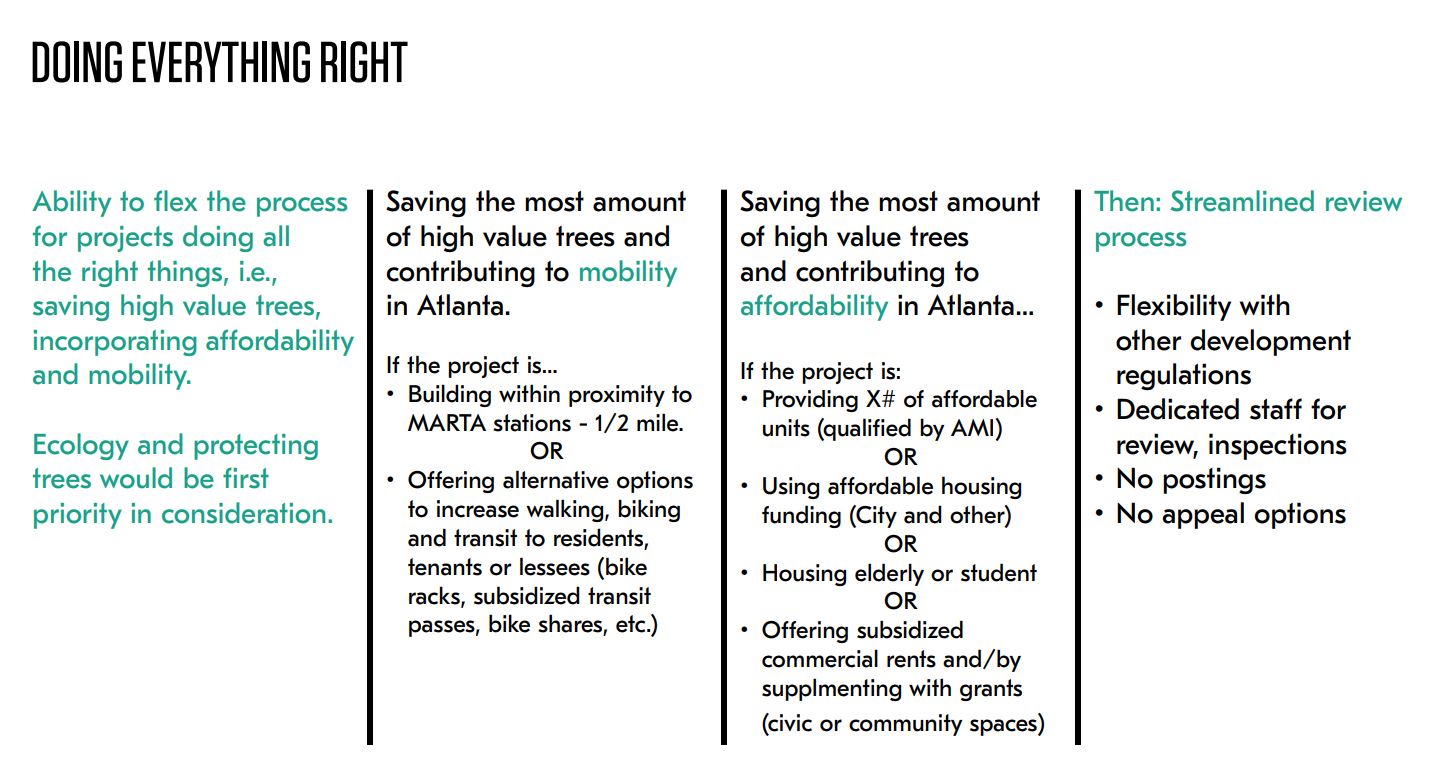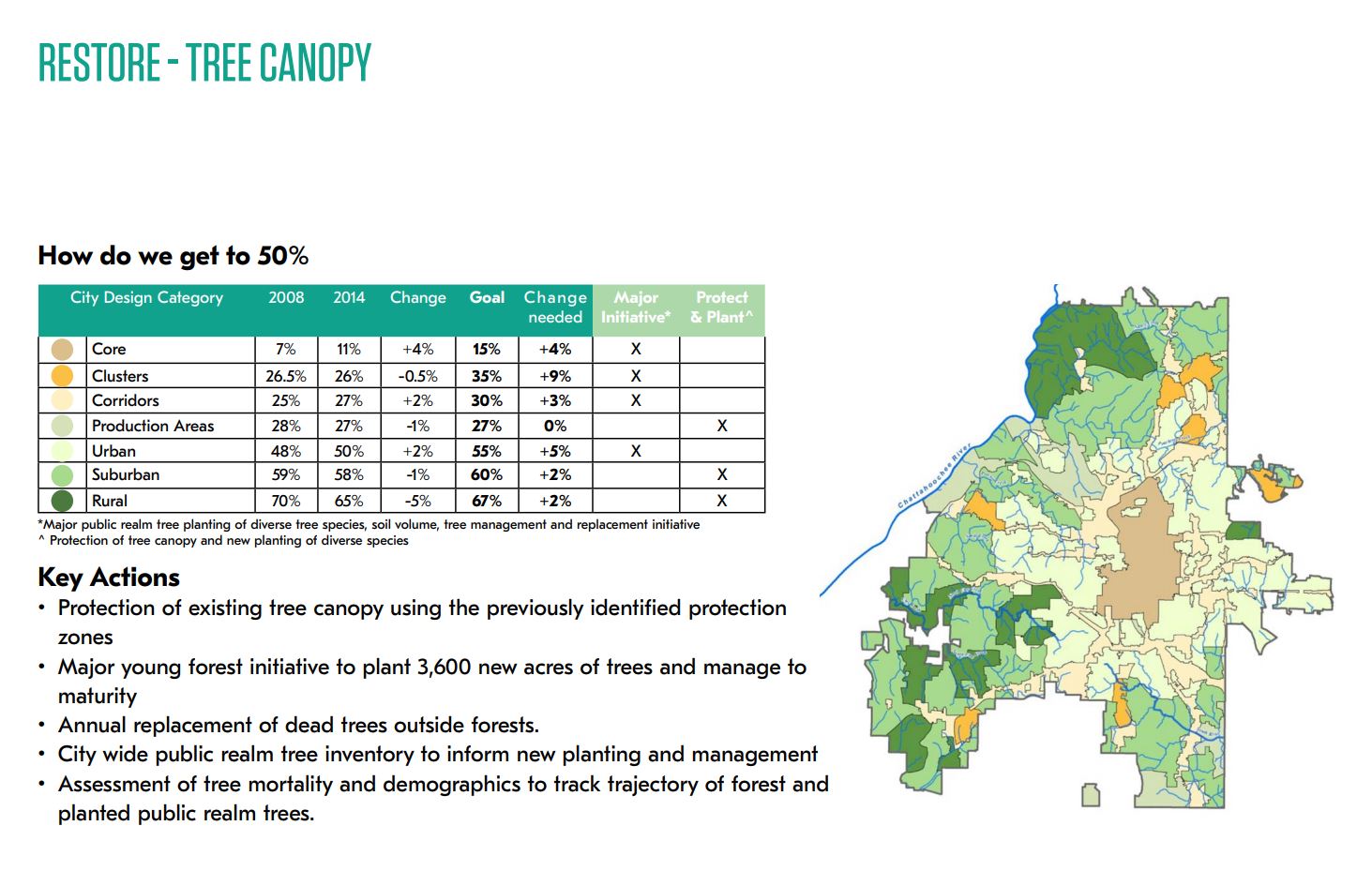What Did the City Say?
The draft outline of the revised Tree Protection Ordinance the City presented the week of June 3 - 6, 2019 was heavily focused on creating a more "streamlined review process" for developers. Most alarming was the revelation that City Planning was planning to do away with the orange/yellow sign postings and all appeal options of proposed tree removals. The right to appeal a denied tree cutting permit would remain for builders or anyone else who wanted to remove a tree, but the right to appeal to save a tree would be eliminated. No arborist preliminary permitting decision could be appealed in the new ordinance.
Elizabeth Johnson, the Urban Ecology Framework Project Manager, said that eliminating postings and appeal options was how the City could "reward" developers who were "doing everything right". However, an appeal is never filed against a developer, but a city arborist who issues a preliminary permit that does not comply with the tree ordinance. Eliminating both the posting and the appeals process eliminates all transparency and the ability to hold the City accountable for the tree removal permits they issue.
And it prevents residents from knowing which
trees are coming down until after they are removed.
Also, there is no apparent protection of trees offered for Atlanta's residential neighborhoods unless the property is in a stream buffer or contains "high value trees". Trees on single family residential lots outside of stream corridors also need substantial protection given that is where 77% of Atlanta's tree canopy resides. Also, the City has not defined what is "high value". Because that definition is an arbitrary one, not a scientific one, it may not be legally enforceable. To remove protection for trees that are not "high value" is short-sighted: many trees that are not "high value" today are the trees that will grow into the high value trees of tomorrow. Finally, a high value model is meant to provide protection for special trees in addition to what the current tree ordinance provides, not to reduce or eliminate the current protection for trees that don't currently meet the high value definition.
The City also recommended providing a "free and easy" permit to remove one "non-high value tree" a year, but they did not provide evidence showing that this was a even citizen need, much less how it would help the City achieve its 50% canopy goal.
While the City did recommend moving the planning process for trees to the beginning of the permitting process, the City pointed out that trees were only part of the equation -- that tree preservation had to be balanced with the City's goals for "affordability, mobility, and growth." Unfortunately, the City did not elaborate on which issues would take priority when a conflict arose between trees and affordability, mobility, and growth.

The City appears to be saying that it can achieve 50% canopy by protecting the stream buffers and a handful of "intact forests", as well as planting 3,600 acres in a "young forest initiative", but they have not provided any data to demonstrate how these measures will enable the City to achieve its 50% canopy goal. In fact, their entire draft was written without examining any of the tree removal data that has been collected in Accela (the City's online permitting database) since 2008. This 10+ years of data would show them what types of trees we have been losing, both legally and illegally, as well as where the trees are coming down and for what reasons. A proper data analysis would enable the City to craft an ordinance to help stem tree loss where the need is most critical. Instead, the City has chosen to move foward with a tree ordinance that is built more on perception than data.